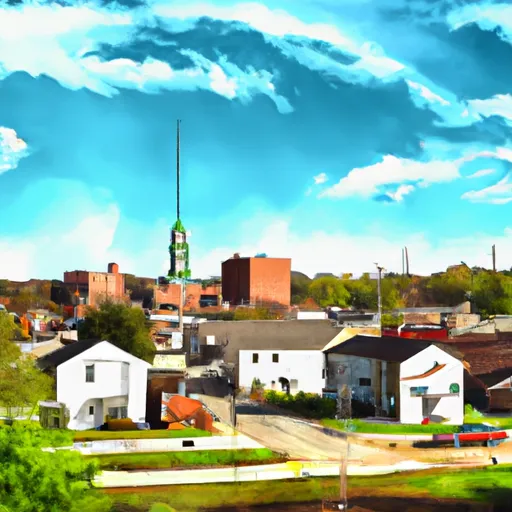°F
°F
mph
Windspeed
%
Humidity











Hillsboro, Ohio is a charming small town located in Highland County. The town experiences a pleasant climate, with warm summers and cool winters. Summers are typically mild to moderately warm, with average temperatures ranging from the mid-70s to low-80s Fahrenheit. Winters are generally cold, with temperatures ranging from the mid-20s to mid-30s Fahrenheit. The region receives a moderate amount of rainfall throughout the year.
Hillsboro is surrounded by beautiful natural landscapes, offering various outdoor recreation opportunities. The Paint Creek State Park is a popular destination for hiking, camping, fishing, and boating. The park features picturesque trails, a tranquil lake, and abundant wildlife, providing a serene retreat for nature enthusiasts. Additionally, Rocky Fork State Park, located nearby, offers opportunities for swimming, picnicking, and wildlife spotting.
The hydrology constituents of Hillsboro are characterized by the presence of several water bodies. Paint Creek, a tributary of the Scioto River, flows through the town, providing opportunities for fishing and canoeing. The Rocky Fork Lake is another significant water feature in the area, offering water-based activities such as boating and kayaking. Overall, Hillsboro provides a delightful mix of climate, hydrology constituents, and outdoor recreation options for residents and visitors alike.
Weather Forecast
Hillsboro receives approximately 1102mm of rain per year, with humidity levels near 81% and air temperatures averaging around 12°C. Hillsboro has a plant hardyness factor of 6, meaning plants and agriculture in this region thrive during a short period during spring and early summer. Most plants will die off during the colder winter months.
Nearby Snowpack Depths
2
Inches
Regional Streamflow Levels
462
Cubic Feet Per Second
133
Cubic Feet Per Second
66
Cubic Feet Per Second
1,150
Cubic Feet Per Second
Nearby Camping
| Camping Area | Reservations | Toilets | Showers |
|---|---|---|---|
| Clear Creek Rec Area | |||
| North Fork - DFWR | |||
| Trace Branch - Buckhorn Lake | |||
| Koomer Ridge Rec Area | |||
| Zilpo Rec Area | |||
| Buckhorn Dam Rec Area - Buckhorn Lake |



